Established for over 25 years
Clinics Nationwide
5 Star Google & Trustpilot Reviews
Botched Scalp Micropigmentation Treatment: What Are Your Options?
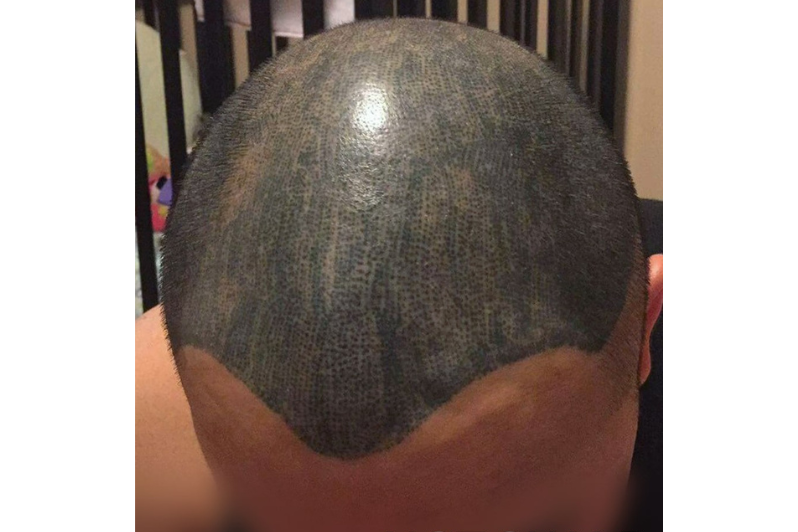
Reading time: 4 min
Scalp micropigmentation (SMP) has emerged as a popular solution for individuals experiencing hair loss. This non-surgical procedure involves depositing pigments into the scalp to create the illusion of a shaved head or densify existing hair, offering a natural-looking and low-maintenance alternative to traditional hair loss treatments.
While SMP boasts numerous benefits, there is a potential risk of botched procedures, leading to significant emotional distress and impacting self-esteem.
This article explores the signs of a botched SMP treatment, delves into the potential causes, and outlines the various options available for individuals facing this unfortunate situation.
Table of Content
The success of an SMP procedure hinges on meticulous technique and expertise. Unfortunately, various factors can lead to botched results, leaving individuals with an unnatural and often distressing appearance. Here are some key signs to watch out for:
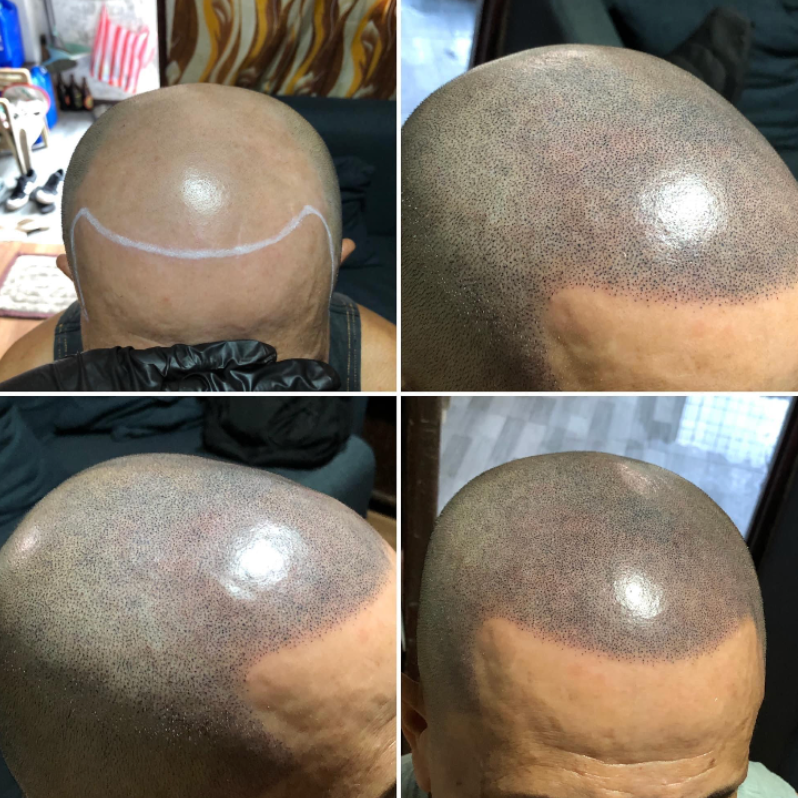
Example of a man with a botched Scalp Micropigmentation procedure, including over saturation of pigment
Unnatural appearance:
This is perhaps the most noticeable indicator of a botched SMP treatment. The pigment colour might be too dark, veer into unnatural shades, or be applied unevenly, resulting in a patchy or inconsistent look. Additionally, the hairline shape or density might appear unnatural, with harsh lines or an unrealistic density compared to natural hair growth patterns. In severe cases, the dots mimicking hair follicles might be large and noticeable, further compromising the desired natural effect.
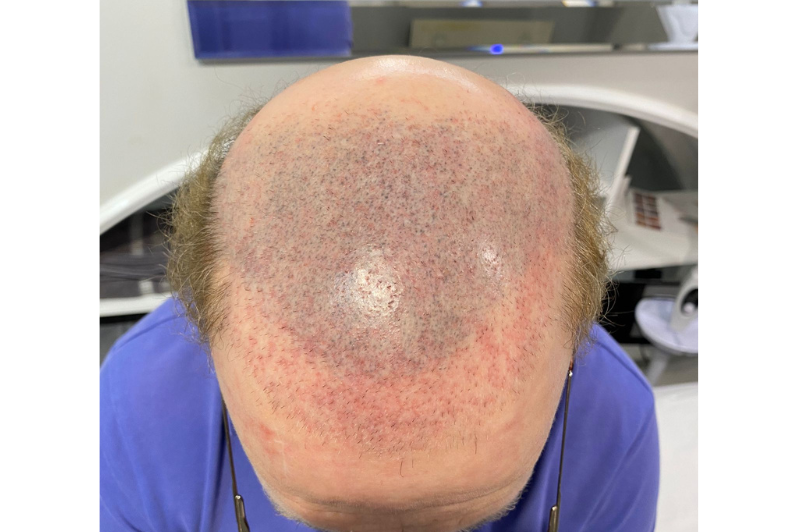
Example of a man with a botched Scalp Micropigmentation procedure where the full scalp hasn't been treated
Technical errors
Beyond visual inconsistencies, botched SMP treatments can manifest in technical errors that pose health risks or further worsen the aesthetic outcome. These include incorrect pigment placement depth, which can lead to scarring or migration of pigments into unintended areas. In extreme cases, improper hygiene or sterilization during the procedure can trigger infections. Additionally, some individuals might experience allergic reactions to the pigments used, highlighting the importance of pre-treatment allergy testing.
Several factors can contribute to a botched SMP procedure, and understanding these causes is crucial to making informed decisions moving forward. Here are some of the most common culprits:
Unqualified technician
The most significant factor influencing the outcome of any SMP procedure is the expertise and qualifications of the technician performing it. Choosing an inexperienced or uncertified individual significantly increases the risk of complications and botched results. Opting for technicians with proper training and a proven track record of successful SMP procedures is paramount.
Ignoring pre-treatment consultation
A thorough consultation before undergoing any SMP procedure is essential. This initial discussion allows the technician to assess the client's scalp condition, hair loss pattern, expectations, and suitability for the treatment. Skipping or inadequately addressing concerns during this consultation can lead to unrealistic expectations and potentially unsuitable techniques, increasing the risk of an unsatisfactory outcome.
Unethical practices
Unfortunately, some practitioners prioritize profit over ethical practices, compromising the quality and safety of the procedure. This can involve using low-quality pigments that may fade unevenly or cause allergic reactions, neglecting proper hygiene protocols, or disregarding established safety guidelines. Identifying and avoiding such unethical practitioners is crucial to safeguard your health and achieve the desired results.
Client unrealistic expectations
While SMP offers remarkable results, it's crucial to maintain realistic expectations throughout the process. Clients who request unnatural hairline shapes, unrealistic densities, or colours outside their natural hair range might end up with an unsatisfactory outcome. Open communication and realistic expectations during the consultation stage are vital for achieving a natural and aesthetically pleasing result.
Fortunately, individuals facing the consequences of a botched SMP treatment are not without options. Here are some potential approaches to consider, each with its own advantages and limitations:
Laser Removal
Laser removal is a popular option for addressing botched SMP treatments. This technique utilises specific laser wavelengths to target and break down the pigments deposited in the scalp. The fragmented pigments are then eliminated by the body's natural processes.
While effective, laser removal typically requires multiple sessions to achieve complete removal, and there is a potential risk of scarring, particularly with older laser technologies or inexperienced practitioners. Choosing a qualified laser technician with expertise in removing SMP pigments is crucial for minimising risks and achieving optimal results.
Corrective SMP
For individuals with less severe botched treatments, corrective SMP might be a viable option. This technique involves strategically placing pigments to improve the overall appearance and address specific concerns like uneven colouring, unnatural hairlines, or patchy areas. The success of corrective SMP depends on the severity of the botch and the skills of the technician. Opting for a practitioner experienced in corrective procedures is essential to ensure a successful outcome.
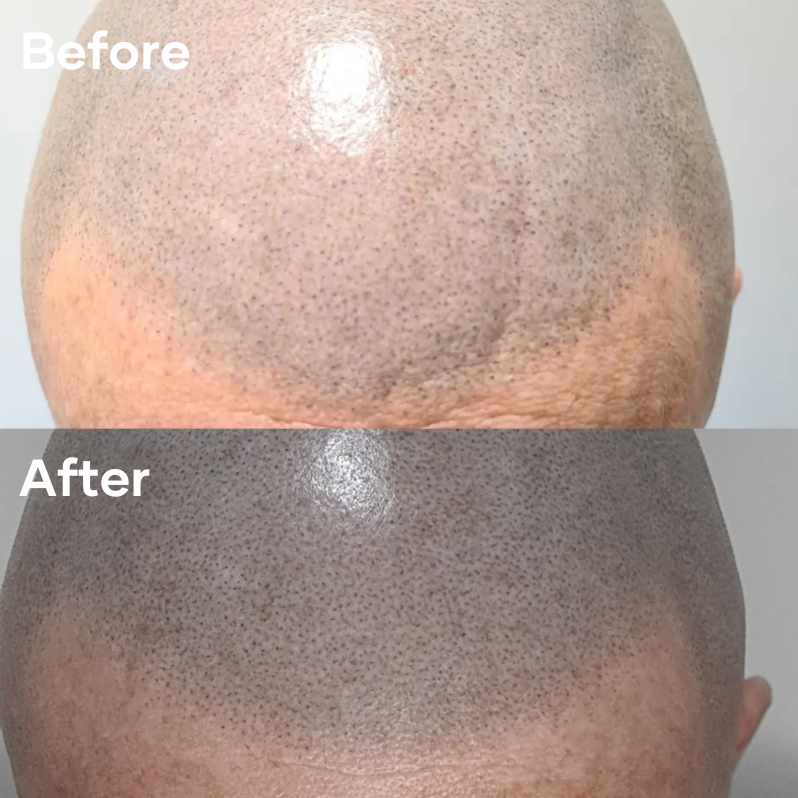
Photo showing before and after SMP Correction procedure
Salt and saline removal is a common technique for removing permanent makeup like eyebrows and eyeliner, however this removal technique is not generally considered a suitable option for botched scalp micropigmentation (SMP). Here's why:
Limited Effectiveness:
Scalp size: Unlike smaller areas like eyebrows, the scalp is significantly larger, making it impractical and time-consuming to effectively remove pigment using this technique. Multiple sessions would likely be necessary, with limited results each time.
Depth of pigment:
SMP pigments are typically deposited deeper than permanent makeup pigments for eyebrows or eyeliner. Salt and saline removal might not be able to reach these deeper layers effectively, leaving behind residual pigment.
Potential Risks:
Scarring: Repeated needling associated with salt and saline removal can increase the risk of scarring, particularly on the delicate scalp tissue.
Uneven removal: The process can lead to uneven removal of pigments, resulting in a patchy appearance.
Infection: Improper technique or hygiene practices during the procedure can increase the risk of infection.
The most suitable approach for addressing a botched SMP treatment depends on various factors, including the severity of the botch, your desired outcome, budget, and individual preferences.
Consulting with a qualified professional experienced in correcting botched SMP procedures is crucial. This specialist can assess your specific situation, discuss the available options in detail, and recommend the most appropriate course of action based on your unique needs and goals.
Summary
Scalp Micropigmentation (SMP) offers a non-surgical hair loss solution, but botched procedures can occur. Signs include unnatural appearance and technical errors. Common causes are unqualified technicians, skipped consultations, and unrealistic expectations. Laser removal and corrective SMP are options for addressing botched treatments, while salt and saline removal is not recommended. Consulting a qualified professional is crucial for choosing the best approach.
How much does it cost to fix a botched SMP treatment?
The cost of correcting a botched SMP treatment varies depending on the chosen method (laser removal, corrective SMP), the severity of the botch, and the expertise of the professional performing the procedure. Consulting with multiple qualified professionals for estimates is recommended to get a clearer picture of the potential costs involved.
How long does it take to recover from corrective SMP or laser removal for a botched treatment?
Recovery time varies depending on the chosen method and the individual's healing process. Laser removal typically involves minimal downtime, with redness and scabbing subsiding within a few days. However, complete healing after multiple sessions might take several weeks. Corrective SMP also involves minimal downtime, with initial scabbing resolving within a few days. However, the full results of corrective SMP might take several weeks to become fully visible as the pigment settles.
Are there any financial assistance options available to help cover the costs of correcting or removing a botched SMP treatment?
Unfortunately, most insurance companies do not cover the costs associated with correcting or removing botched cosmetic procedures like SMP, as they are often considered elective procedures. However, some clinics might offer financing options or payment plans to help manage the financial burden


Article author Dawn Forshaw — Published on 29th February 2024
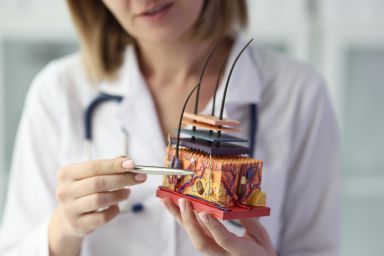
Does Scalp Micropigmentation Damage Hair Follicles?

Is Scalp Micropigmentation Permanent?

Scalp Micropigmentation: A Solution for Blonde & Fair Hair (Men & Women)
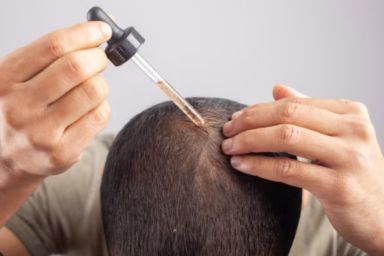
Can You Use Minoxidil with Scalp Micropigmentation?
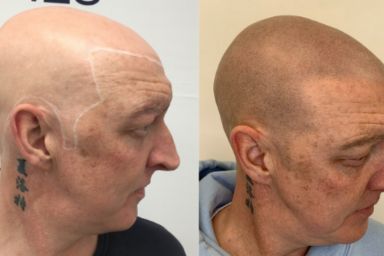
Paul's Transformation: Navigating Alopecia Universalis with Eyebrow & Scalp Micropigmentation
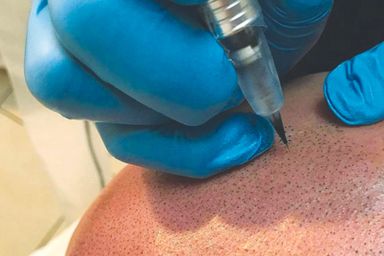
Scalp Micropigmentation Fading: A Comprehensive Guide

Eyebrow Hair Loss Demystified: Uncovering Causes and Pursuing Solutions
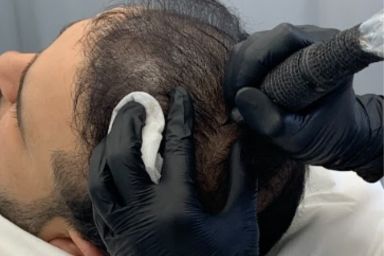
Combining Scalp Micropigmentation and Hair Transplants: The Ultimate Hair Loss Solution

Female Temple Hair Loss: Causes, Prevention & Treatment
- Choosing a selection results in a full page refresh.
- Press the space key then arrow keys to make a selection.

